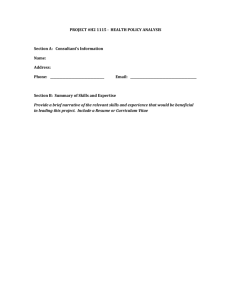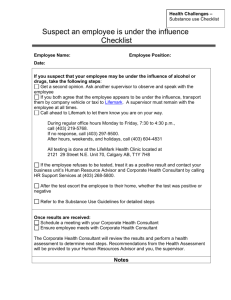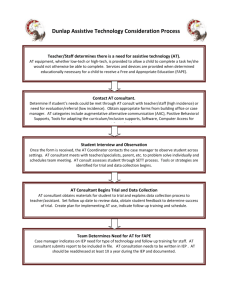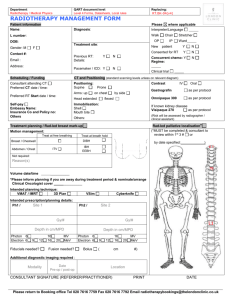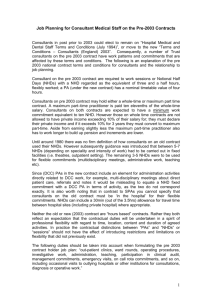P169 moving to a COnsultant of the WEEK MODEL of working in a
advertisement
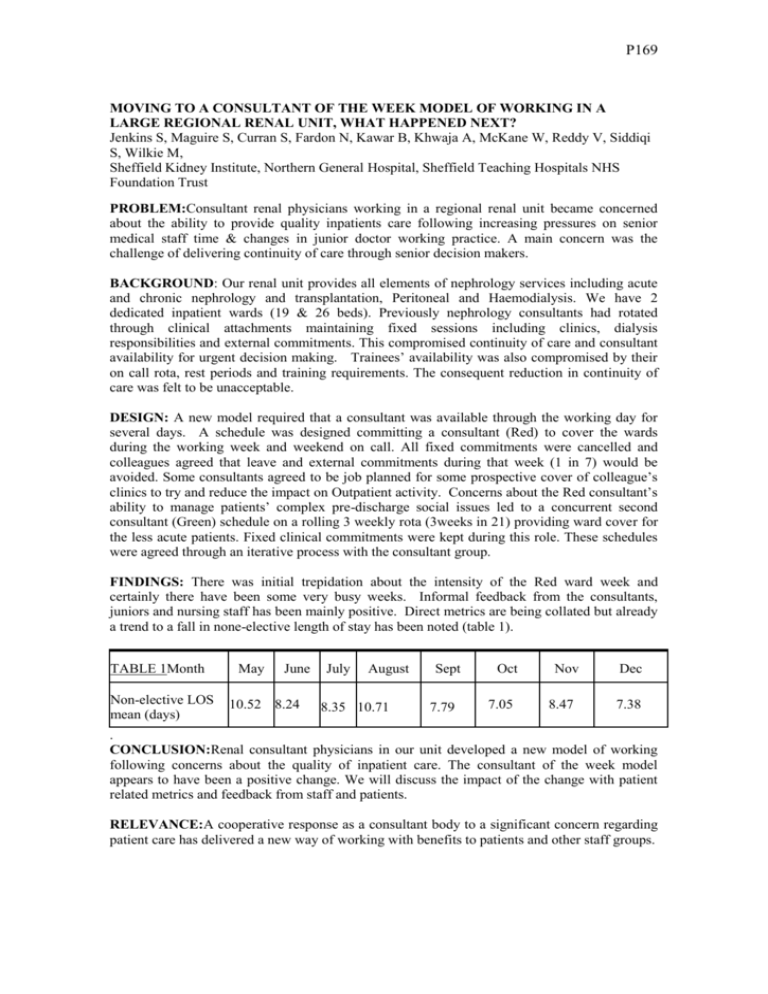
P169 MOVING TO A CONSULTANT OF THE WEEK MODEL OF WORKING IN A LARGE REGIONAL RENAL UNIT, WHAT HAPPENED NEXT? Jenkins S, Maguire S, Curran S, Fardon N, Kawar B, Khwaja A, McKane W, Reddy V, Siddiqi S, Wilkie M, Sheffield Kidney Institute, Northern General Hospital, Sheffield Teaching Hospitals NHS Foundation Trust PROBLEM:Consultant renal physicians working in a regional renal unit became concerned about the ability to provide quality inpatients care following increasing pressures on senior medical staff time & changes in junior doctor working practice. A main concern was the challenge of delivering continuity of care through senior decision makers. BACKGROUND: Our renal unit provides all elements of nephrology services including acute and chronic nephrology and transplantation, Peritoneal and Haemodialysis. We have 2 dedicated inpatient wards (19 & 26 beds). Previously nephrology consultants had rotated through clinical attachments maintaining fixed sessions including clinics, dialysis responsibilities and external commitments. This compromised continuity of care and consultant availability for urgent decision making. Trainees’ availability was also compromised by their on call rota, rest periods and training requirements. The consequent reduction in continuity of care was felt to be unacceptable. DESIGN: A new model required that a consultant was available through the working day for several days. A schedule was designed committing a consultant (Red) to cover the wards during the working week and weekend on call. All fixed commitments were cancelled and colleagues agreed that leave and external commitments during that week (1 in 7) would be avoided. Some consultants agreed to be job planned for some prospective cover of colleague’s clinics to try and reduce the impact on Outpatient activity. Concerns about the Red consultant’s ability to manage patients’ complex pre-discharge social issues led to a concurrent second consultant (Green) schedule on a rolling 3 weekly rota (3weeks in 21) providing ward cover for the less acute patients. Fixed clinical commitments were kept during this role. These schedules were agreed through an iterative process with the consultant group. FINDINGS: There was initial trepidation about the intensity of the Red ward week and certainly there have been some very busy weeks. Informal feedback from the consultants, juniors and nursing staff has been mainly positive. Direct metrics are being collated but already a trend to a fall in none-elective length of stay has been noted (table 1). TABLE 1Month Non-elective LOS mean (days) May June 10.52 8.24 July August 8.35 10.71 Sept 7.79 Oct 7.05 Nov 8.47 Dec 7.38 . CONCLUSION:Renal consultant physicians in our unit developed a new model of working following concerns about the quality of inpatient care. The consultant of the week model appears to have been a positive change. We will discuss the impact of the change with patient related metrics and feedback from staff and patients. RELEVANCE:A cooperative response as a consultant body to a significant concern regarding patient care has delivered a new way of working with benefits to patients and other staff groups.

